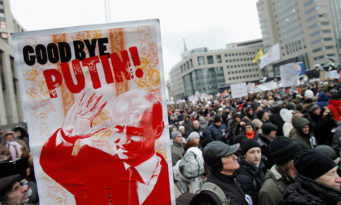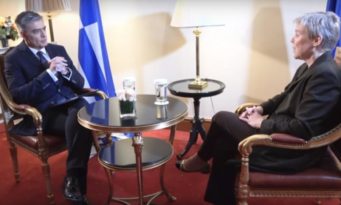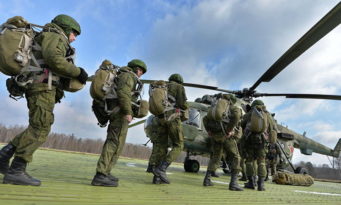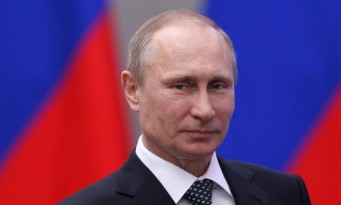Dealing with the Access – Denial Challenge in Europe
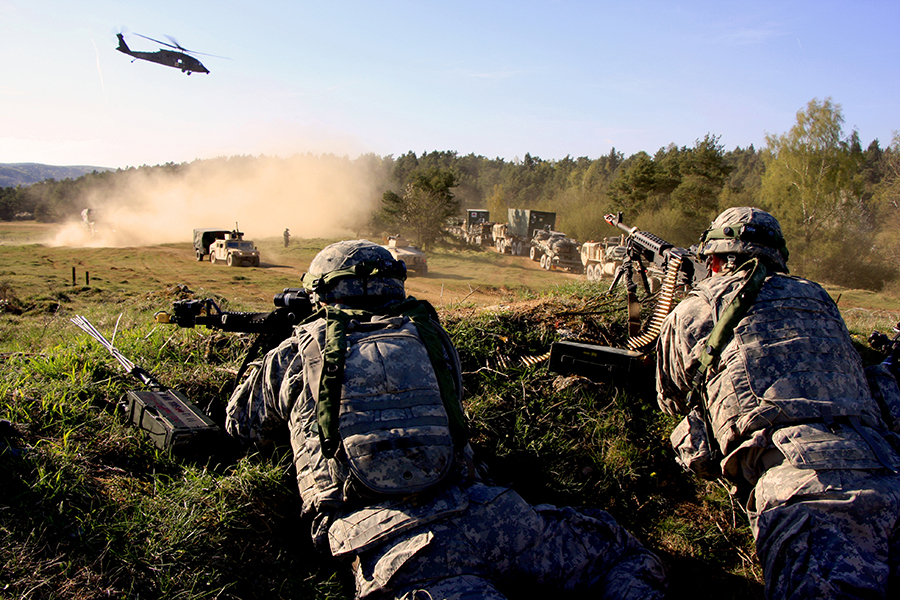
- By Octavian Manea
The A2/AD discussion is very useful because it highlights that, yes, overall NATO is superior, but that its forces are in the wrong place and at often too low a readiness.
How are we dealing with the Access - Denial Challenge in Europe? There are two ways we can look at counterbalancing the A2AD challenge;"If it’s political, that means NATO needs to raise the cost of any Russian aggression. It is not only about deterrence, but also about focusing on collective defence. If it’s military, we need to see what can we afford, what the priorities are that NATO should focus on". How we would deal with the access denial challenge in the European theatre and the decisions taken at Warsaw are amongst the few things, Stephan Frühling and Guillaume Lasconjarias discuss with Defence Matters.
Having in mind the latest decisions in Warsaw how would you assess the progress made by NATO in strengthening its full spectrum deterrence? What did the Warsaw summit change, did it restore credibility in Article 5 from the perspective of the Eastern flank allies?
Stephan Frühling: The decisions at the Warsaw summit are a major step forward to demonstrate that NATO is taking the defence of its Eastern Allies seriously. NATO is now moving from a political focus on reassurance to deterrence and reinforcement, which goes significantly beyond the decisions at the previous summit in Wales.
Guillaume Lasconjarias: I concur with Stephan. The emphasis on forward deployment and the announcement of the four multinational battalions and their stationing in the Eastern part of NATO countries proves that the roadmap from Wales to Warsaw has been not only politically but also operationally successful. It once again shows that the Alliance can be responsive.
At the Warsaw summit, the centre of gravity for the Alliance was the Nordic part of the Eastern Flank. The decisions were very Baltic oriented. Isn’t this creating the impression/perception that the Black Sea region is ignored?
Stephan Frühling: NATO has to set priorities, and it is far more vulnerable in the North. It is in the North where it shares direct borders with Russia, and where Russian provocations against NATO itself are concentrated. The activation of Multinational Division South East and development of Graduated Response Plans for the Black Sea region have received less attention, but demonstrate that NATO is not ignoring the region.
Guillaume Lasconjarias: I don’t think that the Black Sea region is out of NATO’s scope. The decision to implement NATO Forces Integration Units in Bulgaria and Romania are a sign of this interest. As we are going to talk about A2/AD later on, we have to recall that allies take this challenge very seriously because any encroachment on NATO’s territory is a matter of concerns.
What options do the NATO vulnerable states, that are in the proximity of the Russians A2/AD bubbles, have? Should they develop their own tailored A2/AD national umbrellas?
Stephan Frühling: Yes, you see some of that thinking in Poland’s acquisition of land-based anti-ship cruise missiles, for example, and its plans to acquire Patriot air and missile defence systems. But ultimately such defences need to be commensurate to the Russian ability to project force in the first place, and hence they are probably more urgently required in the Baltic region than in the Black Sea.
Guillaume Lasconjarias: More than just fancying the “bright and shiny object”, one must have an understanding on what A2/AD means. Buying new materiel doesn’t guarantee safety, and in some cases it might just prompt an arms race where these countries would sacrifice their budget on the detriment of a real full-spectrum strategy. I don’t think developing “tailored umbrellas” is useful, as a potential adversary will be able to further identify the weakest links. In addition, that will put a priority on national defences while I believe stronger cooperation in the framework of the Alliance is the only possible deterrent.
How do you see the role of the A2/AD capabilities from the perspective of the Russian strategy? Are they defensive or offensive?
Guillaume Lasconjarias: If we speak about A2/AD capabilities we talk by nature about technologies that are both. Almost any system can be used in both defensive and offensive postures. But the same is also true for NATO. Any capability that NATO is using can be seen as potentially an offensive system. These days no particular system is absolutely only defensive or offensive. You can add offensive tools in a purely defensive strategy. We observe in the Kaliningrad and Crimea the build up of bastions, a follow-on development to something that already existed in the Russian history. This began in the Arctic, where they started to implement their A2/AD strategy, the prequel of the build-ups in Kaliningrad, Crimea and now on Syria along the A2/AD lines.
Stephan Frühling: Geography is an important factor in this context. A2/AD is often associated with the Pacific theatre in terms of the capabilities that make difficult for the US to reinforce its allies. That is also the situation of the Baltic States. But in the Pacific, Chinese A2/AD reinforces the huge geographic distances that are already there. When we look at Kaliningrad in particular it is a very different situation because the problem are not the huge distances that the Chinese are leveraging in Pacific, but the proximity that the Russians are leveraging. If you want to look to an equivalent to the A2/AD problem that we have in the Pacific and Europe, you probably have to look to the Russian threats on the sea lines in the North Atlantic. From this perspective Kaliningrad is quite different because those systems expand over much of allied territory, protecting an enclave from where the Russians can easily project force under the cover of those systems into allied territory. On a technological base we are dealing with long-range anti-air/anti-ship systems, but the strategic challenge is much more acute in the sense that they are an umbrella under which Russians may move to actually achieve tactical gains on allied territory. Crimea is different from Kaliningrad and is difficult to see how that would be a direct threat to the territorial integrity of Romania. Kaliningrad is definitely a direct threat to the Baltic states and to some extent to Poland. Kaliningrad is the only place where NATO needs to be able to neutralise the A2/AD capabilities if its collective defence guarantee is to remain credible.
In the Black Sea, Romania is calling for a dedicated NATO fleet to the region. How important is the NATO maritime component from this perspective?
Stephan Frühling: Beefing up the NATO maritime presence in the Black Sea makes sense from the perspective of showing the flag and preventing the Black Sea from implicitly becoming a Russian lake. That is more of a political need, however, not driven by military necessity for collective defence as the Black Sea allies can be reinforced by land and air across allied territory. In the Baltic Sea the problem is more acute because you need to preserve those sea lines for reinforcing the Baltic states. In that sense, the argument that Crimea and the A2/AD systems there don’t pose a direct territorial threat to the alliance doesn’t mean that they don’t have consequences or that there is no value for a NATO presence, but the nature and the purpose of that presence should be quite different from what is necessary in the Baltic.
Guillaume Lasconjarias: Both Baltic and Black Seas share a common denominator, common features. Even if both would become Russian lakes you can still close or lock them down because there are choke points under NATO control, with major consequences for Russian commerce. Their cargo shipping would be unable to reach Kaliningrad but also Saint Petersburg. The trade would be cut off. If we compare the Baltic region with the Black Sea they could of course keep at bay in the Black Sea any NATO force, but to what purpose? In this case we have just to close down the Turkish straits locking them down. This would hurt the Russian strategy that we’ve seen developed over the last two years because what matters for them is power projection into the Mediterranean. Becoming too aggressive in the Black Sea would lead them to be trapped in the Black Sea without having the possibility to exit or reinforce their forces in Syria. I don’t see them playing that card. And I don’t see NATO enforcing this policy either.
During the Cold War we had the Fulda Gap. Now we have the Suwalki Gap. How do you assess the impact on the Baltic security ecosystem of the developing of the A2/AD capabilities in Kaliningrad especially from the perspective of the NATO’s ability to reinforce its allies by land through the Suwalki gap?
Guillaume Lasconjarias: The Suwalki gap can be really only understood as a true chokepoint if we consider Russia’s potential to deny access to air and sea at the same time. If NATO maintains open sea and air lanes, interdicting the land link far less use, because this will not prevent NATO from reinforcing its allies. Heavy forces can be injected through Suwalki into the Baltic states by road. I haven’t heard of any exercise meant to play the interdiction game by deploying artillery or other assets whose range could cover the Suwalki gap. If that happens the Russians will be in the position to forbid any reinforcement by land. If you do this basically you are in an escalation process with NATO.
Stephan Frühling: If Russia interferes with air and maritime communications by declaring some air and maritime exclusion zones, for example, threatening to shoot down anything passing those areas, there may be an argument to be made that this might be less escalatory than interfering with the Suwalki gap, where they would have to either shell NATO territory or cross the border with forces. In terms of levels of escalation, that is a very significant step. Another issue is at what point it might make sense for the Russians to interfere with NATO communications? I think there is an assumption that they would probably interfere with the flow of initial reinforcements. Maybe it makes sense to let VJTF to fly in the Baltic and then close the door. NATO needs some studies on what actually is the best mix of air-maritime and land movement. With prepositioned equipment you can move by air and that could be done though Sweden. If you want to move more heavy equipment you need to look at sea or land. NATO recognises the problem, but more in depth analysis is needed to understand the problem both at the operational and strategic levels and how it might relate to escalation of a crisis.
Guillaume Lasconjarias: What we have here is also a difference in perspective between commentators and politicians in different parts of the alliance. Discussing A2/AD and the reinforcement capabilities for the Eastern Flank, and mainly for the Baltic States, is based on different stories. For Western allies, especially for the Americans, a discussion about A2/AD is about capabilities to empower a political and diplomatic credibility, first and foremost. It is the possibility to reinforce anywhere and at anytime, any given territory. For Easterners, especially for their politicians, A2/AD is just the technical way of saying, well we need more troops, more reassurance, more measures that prevent us going back to what we’ve experienced during the days of the Soviet Union. You see here two basically different visions. For Eastern politicians is about being able to survive. You have two ways to address the A2/AD issue. One pretty much is resource oriented while the other is about getting to the next stage as the alliance, as much in terms of overall priorities and political commitment as in capabilities.
Stephan Frühling: At the same time there is some common ground for analyzing the problem. Before the A2/AD debate that started in Europe in 2015, the discussions between the Eastern and Western European NATO members were more about political will. When the Eastern European countries said that they don’t feel defended it was seen as questioning the political willingness of the Western allies to defend them. Often people in the Western allies didn’t see what the regional problem was, since NATO’s conventional superiority over Russia, if you just look at the IISS’s ‘Military Balance’, is so overwhelming. In that sense, the A2/AD discussion is very useful because it highlights that, yes, overall NATO is superior, but that its forces are in the wrong place and at often too low a readiness. Equally for the East Europeans it does show that not everything is solved through forward basing, because even with forward basing, you still need to be able to reinforce those forces. As NATO looks at the implications of operating into an A2/AD environment I hope that this process will provide some data rich analysis that will then also inform and advance the political debates in the alliance. This is something that we’ve seen throughout the Cold War. It is not unusual in the end that the political debates are diffused and to some extent solved by focusing on the more practical levels of Alliance cooperation.
What approach/framework should the Alliance develop and encourage in order to preserve this ability to maintain access and reinforce allies in an A2/AD environment?
Stephan Frühling: The key is that there is no silver bullet. Solving the problem will have to take into consideration a whole range of elements. Presenting a credible threat to Kaliningrad on the ground is one option but that will have to go hand in hand with the ability to isolate Kaliningrad to prevent Russian reinforcement, and obviously having the ability to reinforce Allies in the meantime by air, land and sea, practicing tactics to defend convoys and the like. NATO’s commitment in Warsaw to a credible reinforcement strategy of the multinational battalions is an important step in the right direction here. Dusting off some old books and exercising along the lines of the old REFORGER exercises will have a visible impact for both the allies and the Russians. In this context, geo-strategically NATO would solve a lot of problems by working with Sweden. Reinforcing the Baltic states by air would be a lot easier if NATO can use Swedish air space. All these steps will contribute to reducing vulnerabilities.
Guillaume Lasconjarias: From the perspective of what we should be able to do regarding the know-how of dealing with A2AD, I would add the importance of suppression of the enemy’s air defences. This is one thing that all European allies know because they faced it in Serbia and Kosovo. However when Libya came, it was impossible to deal with the problem without the help of the US because almost no European ally has developed over the past 10 years suppression of enemy air defence capabilities. We all have to rely on US capabilities. This is one thing that we will need to deal not just with Kaliningrad, but with any A2/AD bubble. NATO has to build again this capability, which is very costly and something that you can’t build overnight.
With regards to the question of Sweden, I would add Finland. Neither of those countries would become a NATO member without the other. It is either Sweden and Finland or no Sweden and no Finland. On a political level, changing their neutrality for membership was never even considered during the Cold War. The question is would it change something now if Sweden and Finland joined NATO? How would Russia react? Would it mean that all their fears would be vindicated? Would Russia go for seizing the Gotland islands in the middle of the Baltic Sea?
Are there any other elements that we should take into consideration in counterbalancing the A2/AD challenge in Europe?
Guillaume Lasconjarias: We have basically two ways of looking at this. We first need to understand if it’s a political or a military problem. If it’s political, that means NATO needs to raise the cost of any Russian aggression. It is not only about deterrence, but also about focusing on collective defence. If it’s military, we need to see what can we afford, what the priorities are that NATO should focus on. It is a discussion about the tools and the capabilities that we need on an urgent basis. The problem is that it takes always time to fix these capability gaps. In reality, none of these capabilities that are considered to be crucial to fight and break the A2AD bubble are new to us. We knew from the lessons learnt in Kosovo and from Libya. What have we done so far? Not enough. Now that we have the Russians A2/AD is this a wake up call? I suppose so, and the fact that this has been more or less said in the Warsaw communiqué proves the sensitivity of this domain.
Guillaume Lasconjarias is a Researcher in the Research Division of the NATO Defense College
Stephan Frühling is an Associate Professor in the Strategic and Defence Studies Centre, Australian National University
Photo Credit: US Army, Capt. Henry Chan (Sgt. Scott Swain, right, and Sgt. Ricardo Aquino, both supply sergeants for the 2nd Cavalry Regiment's field artillery troop, defend a hilltop as a 16th Sustainment Brigade logistics supply column passes by during exercise Saber Junction 15.)







